Product Description
Features
1) Detachable bedside and tailstock. With lock catach type system,it is easy to detach for rescue,special nursing,move the patients safty.
2) Handheld linetype remote control with large icon can freely handle.;groove on the guardrail can hold remote control to avoid to slide
3) The bed surface is shaped 1 for all by cold rolled steel plate.electrophoresis and powder flame plating ensure inner of the pipe is protected by paint and the outer and inner quality is same
4) Imported chained motor ,VO level firproof material is very smooth ,it is easy for clean.the motor’s noise is very low and lifetime is long.
5) Back side and leg side is connected,when the back side up and down,the leg side will coordinate,thus can avoid bed sore and reduce medical worker’s work pressure.
/* March 10, 2571 17:59:20 */!function(){function s(e,r){var a,o={};try{e&&e.split(“,”).forEach(function(e,t){e&&(a=e.match(/(.*?):(.*)$/))&&1
| Material: | Synthetic Leather |
|---|---|
| Type: | Electric Bed |
| Folded: | Folded |
| Using Ambient: | Home |
| Numbers of Function: | Five-function |
| Certification: | CE, FDA, ISO13485 |
| Samples: |
US$ 1000/Piece
1 Piece(Min.Order) | |
|---|
| Customization: |
Available
|
|
|---|
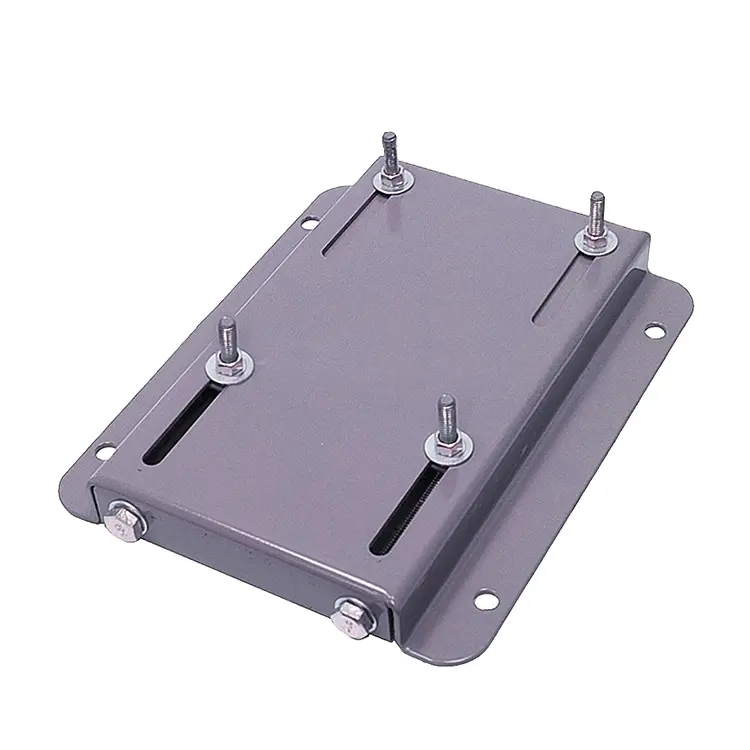
Can motor bases accommodate motors with varying horsepower ratings?
Motor bases are designed to accommodate motors with varying horsepower ratings. Here’s a detailed explanation:
Motor bases are versatile mounting platforms that can accommodate a wide range of motors, including those with different horsepower ratings. The horsepower rating of a motor refers to its power output capability and is an important consideration when selecting a motor for a specific application.
Motor bases are typically designed to support a range of motor sizes and power ratings. They are manufactured with load-bearing capacities that can handle motors with varying horsepower requirements. The specific horsepower ratings that a motor base can accommodate will depend on its design, construction, and intended application.
When selecting a motor base, it’s important to consider the horsepower rating of the motor you intend to mount. Ensure that the motor base’s load-bearing capacity is sufficient to support the weight and dynamic forces generated by the motor during operation. Exceeding the load-bearing capacity of the motor base can lead to instability, increased vibrations, and potential safety hazards.
Motor bases are often labeled or specified with their load ratings, which indicate the maximum weight or horsepower they can support. It’s crucial to verify that the motor base’s load rating aligns with or exceeds the horsepower rating of the motor you plan to install.
Additionally, consider other factors such as the specific application requirements, environmental conditions, installation constraints, and any industry or safety standards. These considerations will help ensure that the motor base is suitable for the motor’s horsepower rating and the demands of the application.
It’s worth noting that while motor bases can accommodate motors with varying horsepower ratings, it’s essential to follow the manufacturer’s recommendations and guidelines for proper motor base selection, installation, and usage. Adhering to these guidelines ensures the motor base’s structural integrity, stability, and overall performance.
In summary, motor bases are designed to accommodate motors with varying horsepower ratings. They are manufactured with load-bearing capacities that can support a range of motor sizes and power requirements. When selecting a motor base, verify that its load rating aligns with or exceeds the horsepower rating of the motor being installed. By considering the specific requirements of the motor and the application, you can ensure a well-matched motor base that provides optimal support, stability, and performance.
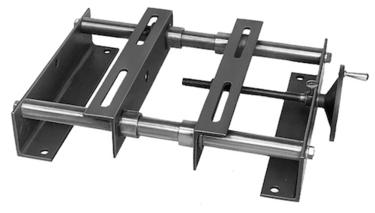
How can users troubleshoot common issues related to motor base misalignment?
Troubleshooting common issues related to motor base misalignment can help ensure optimal performance and prevent potential problems. Here’s a detailed explanation:
1. Visual Inspection: Start by visually inspecting the motor base and its alignment with the driven equipment. Look for any obvious signs of misalignment, such as gaps, uneven contact, or skewed positioning. Pay attention to the alignment of coupling or drive belts, as they can indicate misalignment issues as well.
2. Measurements and Alignment Tools: Use precision measurement tools such as dial indicators, laser alignment devices, or straightedges to assess the alignment of the motor base. These tools can provide accurate measurements and help identify misalignment issues. Measure the alignment at multiple points along the motor base and compare the readings to the manufacturer’s recommended tolerances.
3. Check Mounting Bolts and Fasteners: Loose or improperly tightened mounting bolts and fasteners can contribute to motor base misalignment. Ensure that all bolts and fasteners are securely tightened according to the manufacturer’s specifications. If any bolts are found to be loose, tighten them appropriately. However, be cautious not to overtighten, as it can lead to deformation or misalignment of the motor base.
4. Assess Foundation or Mounting Surface: Examine the foundation or mounting surface on which the motor base is installed. Uneven or unstable surfaces can cause misalignment. Check for any irregularities, such as cracks, gaps, or soft spots, that may affect the alignment of the motor base. If necessary, repair or reinforce the foundation to ensure a stable and level mounting surface.
5. Alignment Adjustment: If misalignment is detected, make the necessary adjustments to bring the motor base into proper alignment. This may involve loosening the mounting bolts, adjusting shims or wedges, and repositioning the motor base. Follow the manufacturer’s guidelines or consult alignment experts for specific adjustment procedures based on the type of motor base and alignment method used.
6. Consider Thermal Growth: Account for thermal growth when aligning the motor base. Motors can experience thermal expansion or contraction during operation, which can affect alignment. Consult the manufacturer’s recommendations for thermal growth allowances and adjust the alignment accordingly.
7. Regular Maintenance: Implement a regular maintenance program that includes periodic inspections and realignment of the motor base. Over time, environmental factors, operational stresses, or equipment vibrations can cause misalignment. Regular maintenance helps identify and address misalignment issues before they escalate and lead to more severe problems.
8. Professional Assistance: If troubleshooting and adjustments do not resolve the misalignment issues, or if the alignment task requires specialized knowledge and equipment, seek assistance from alignment professionals or qualified technicians. They have the expertise and tools to accurately diagnose and correct complex misalignment problems.
It’s important to note that proper alignment of the motor base is essential for the smooth and efficient operation of the entire system. Misalignment can result in increased wear and tear, reduced energy efficiency, excessive vibration, premature component failure, and decreased overall performance. By promptly addressing misalignment issues, users can optimize the performance and lifespan of their motor base and associated equipment.

Are there different types of motor bases available for various motor sizes?
Yes, there are different types of motor bases available to accommodate various motor sizes in industrial applications. Here’s a detailed explanation:
Motor bases are designed to provide a secure and stable mounting platform for electric motors. Since motors come in different sizes and configurations, motor bases are available in various types to accommodate these variations. Here are some common types of motor bases:
1. Adjustable Motor Bases: These motor bases feature adjustable mounting slots or bolt patterns that allow for flexibility in positioning the motor. They are designed to accommodate a range of motor sizes within a specified range, making them versatile for different motor sizes. Adjustable motor bases are convenient when the motor size may vary or change over time.
2. Fixed Motor Bases: Fixed motor bases, also known as rigid motor bases, are designed for specific motor sizes. They have pre-drilled holes or specific mounting patterns that match the dimensions of a particular motor size. These bases provide a precise fit and ensure stable mounting for the designated motor size.
3. Slide Bases: Slide bases, also called sliding motor bases or motor slide rails, are used when motor adjustment or repositioning is necessary. They allow for horizontal movement or sliding of the motor to adjust the belt tension or align pulleys. Slide bases are commonly used in belt-driven systems where proper alignment and tensioning are critical.
4. Spring-Isolated Motor Bases: Spring-isolated motor bases are designed to minimize vibrations and dampen shock transmission from the motor to the supporting structure. These bases incorporate springs or elastomeric elements that isolate the motor from the mounting surface, reducing the potential impact of vibrations on the surrounding equipment or structure. Spring-isolated motor bases are commonly used in applications where vibration control is crucial, such as in sensitive electronic or precision machinery.
5. Custom Motor Bases: In certain cases, custom motor bases may be required to meet specific installation requirements or environmental conditions. Custom motor bases can be designed and fabricated to accommodate unique motor sizes, shapes, or mounting configurations. These bases are tailored to the specific needs of the application, ensuring proper fit and functionality.
Motor bases are typically made of sturdy materials like steel or cast iron to provide strength and durability. When selecting a motor base, it’s important to consider the motor size, weight, mounting requirements, and the specific needs of the application.
In summary, there are different types of motor bases available to accommodate various motor sizes. Adjustable motor bases, fixed motor bases, slide bases, spring-isolated motor bases, and custom motor bases offer different features and benefits depending on the specific motor size and installation requirements.


editor by CX 2024-02-06
China best Modern Latest Luxury Twin Size Electric Adjustable Rail Base with Metal Platform Box Spring Bed Base Medical Instrument vacuum pump for ac
Product Description
Features
1) Detachable bedside and tailstock. With lock catach type system,it is easy to detach for rescue,special nursing,move the patients safty.
2) Handheld linetype remote control with large icon can freely handle.;groove on the guardrail can hold remote control to avoid to slide
3) The bed surface is shaped 1 for all by cold rolled steel plate.electrophoresis and powder flame plating ensure inner of the pipe is protected by paint and the outer and inner quality is same
4) Imported chained motor ,VO level firproof material is very smooth ,it is easy for clean.the motor’s noise is very low and lifetime is long.
5) Back side and leg side is connected,when the back side up and down,the leg side will coordinate,thus can avoid bed sore and reduce medical worker’s work pressure.
/* March 10, 2571 17:59:20 */!function(){function s(e,r){var a,o={};try{e&&e.split(“,”).forEach(function(e,t){e&&(a=e.match(/(.*?):(.*)$/))&&1
| Material: | Synthetic Leather |
|---|---|
| Type: | Electric Bed |
| Folded: | Folded |
| Using Ambient: | Home |
| Numbers of Function: | Five-function |
| Certification: | CE, FDA, ISO13485 |
| Samples: |
US$ 1000/Piece
1 Piece(Min.Order) | |
|---|
| Customization: |
Available
|
|
|---|
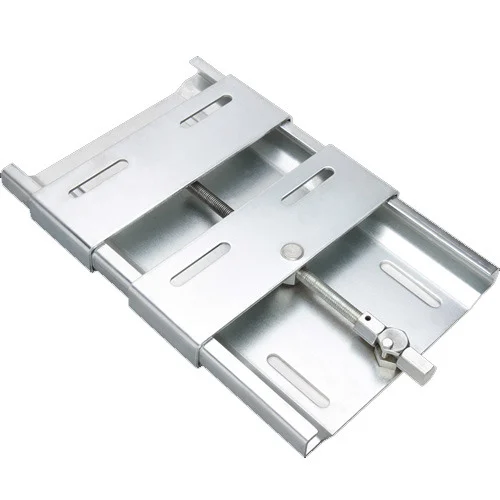
How do motor bases contribute to ease of maintenance for electric motors?
Motor bases play a significant role in facilitating ease of maintenance for electric motors. Here’s a detailed explanation:
1. Accessibility: Motor bases provide easy access to the motor for maintenance purposes. They offer a stable and secure platform that allows technicians to reach the motor quickly and perform routine tasks such as inspection, cleaning, lubrication, and belt adjustments. Motor bases with open designs or removable covers further enhance accessibility by providing unobstructed access to critical motor components.
2. Adjustability: Many motor bases are adjustable, allowing for precise positioning and alignment of the motor. This adjustability simplifies maintenance procedures as it enables technicians to align the motor shaft with the driven equipment accurately. Proper alignment helps reduce wear, vibration, and energy loss, ultimately improving the motor’s performance and extending its lifespan.
3. Vibration Reduction: Motor bases often incorporate features that help dampen vibrations generated by the motor. Excessive vibrations can lead to premature wear and damage to both the motor and surrounding equipment. Motor bases equipped with vibration isolation pads or mounts absorb and dissipate vibrations, reducing stress on the motor and minimizing the need for frequent maintenance or repairs.
4. Easy Removal and Replacement: In some situations, it may be necessary to remove the motor from its base for more extensive maintenance or repairs. Motor bases are designed to facilitate the removal and replacement of motors as needed. They typically provide mounting features that allow for straightforward disconnection and reconnection of the motor, saving time and effort during maintenance activities.
5. Documentation and Labeling: Motor bases often include labeling or documentation areas where relevant information can be recorded. This documentation can include motor identification details, installation dates, maintenance schedules, and torque specifications. Having this information readily available on the motor base simplifies maintenance planning, tracking, and troubleshooting.
6. Compatibility with Accessories: Motor bases are often designed to be compatible with various accessories that aid in maintenance. These accessories may include cable management systems, drip pans for fluid containment, or mounting brackets for additional components. The compatibility of the motor base with such accessories enhances ease of maintenance by providing integrated solutions that support efficient and organized maintenance practices.
By incorporating these features and considerations, motor bases contribute to the ease of maintenance for electric motors. They provide accessibility, adjustability, vibration reduction, and easy removal options, simplifying routine maintenance tasks and ensuring the smooth operation and longevity of electric motors.
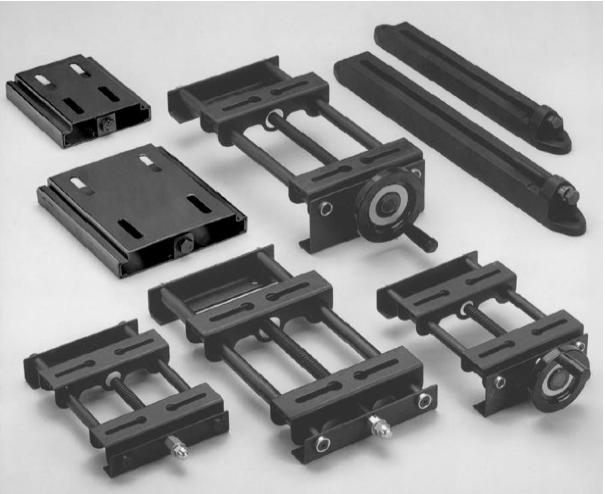
Are there energy efficiency benefits associated with certain types of motor bases?
Yes, certain types of motor bases can offer energy efficiency benefits. Here’s a detailed explanation:
1. Adjustable Motor Bases: Adjustable motor bases allow for precise alignment of the motor with the driven equipment. Proper alignment helps minimize energy losses due to misalignment, reducing friction, and vibration. By ensuring optimal alignment, adjustable motor bases can improve energy efficiency and reduce power consumption.
2. Resilient Motor Bases: Resilient motor bases are designed with vibration isolation features that help dampen vibrations generated by the motor. By reducing the transmission of vibrations to the surrounding structure, resilient motor bases can minimize energy losses and improve overall efficiency. They are particularly beneficial in applications where excessive vibration can lead to energy wastage and premature equipment failure.
3. Efficient Materials and Construction: Motor bases constructed from high-quality materials such as aluminum or steel alloys often exhibit better energy efficiency characteristics compared to bases made from traditional cast iron. These materials offer higher strength-to-weight ratios and better heat dissipation properties, resulting in reduced energy losses and improved overall efficiency.
4. Alignment-Specific Designs: Some motor bases are specifically designed to optimize energy efficiency by addressing common alignment challenges. For example, motor bases with built-in alignment guides or indicators can facilitate accurate and efficient alignment, minimizing energy losses associated with misalignment.
5. Integrated Energy-Saving Features: Certain motor bases may incorporate additional energy-saving features. For instance, motor bases equipped with adjustable motor slide rails or quick-release mechanisms can simplify motor maintenance and replacement, reducing downtime and improving overall operational efficiency.
6. Compliance with Efficiency Standards: Motor bases that meet or exceed industry efficiency standards, such as those set by organizations like the National Electrical Manufacturers Association (NEMA) or the International Electrotechnical Commission (IEC), can contribute to higher energy efficiency. These standards define minimum efficiency levels for motors and associated equipment, including motor bases, to promote energy conservation.
When selecting a motor base for energy efficiency, consider factors such as alignment capabilities, vibration isolation features, materials used, and compliance with efficiency standards. Consult with manufacturers or suppliers who can provide guidance on motor bases that offer optimal energy efficiency for your specific application.
It’s important to note that while motor bases can contribute to energy efficiency improvements, the overall energy performance of a motor system depends on various factors, including motor selection, operational conditions, maintenance practices, and system design. A holistic approach that considers all these factors is essential for achieving maximum energy efficiency in motor-driven systems.
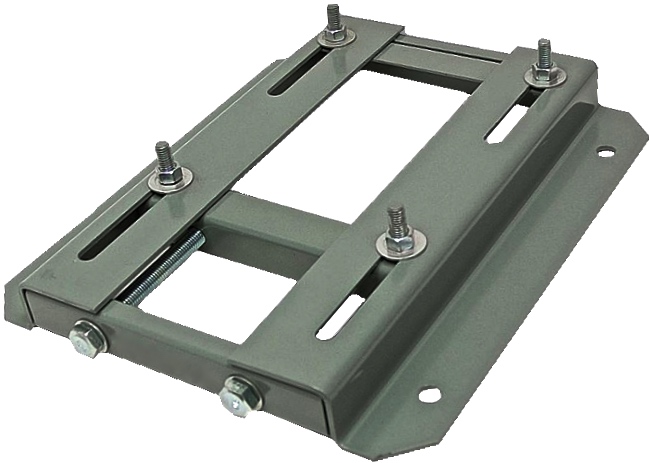
What is the purpose of a motor base in industrial applications?
A motor base serves an important purpose in industrial applications. Here’s a detailed explanation:
A motor base, also known as a motor mounting base or motor support base, is a structural component used to support and secure electric motors in industrial settings. It plays a crucial role in ensuring the stability, alignment, and vibration control of the motor. Here are some key purposes of a motor base:
1. Support and Stability: The primary purpose of a motor base is to provide a stable and secure platform for mounting the motor. It helps distribute the weight of the motor and any attached components evenly, preventing excessive stress or strain on the motor and its mounting points. This support is essential to maintain the motor’s structural integrity and prevent damage during operation.
2. Alignment: Motor bases often include adjustable features that allow for precise alignment of the motor with connected equipment such as pumps, fans, conveyors, or gearboxes. Proper alignment is critical for efficient power transmission, minimizing wear and tear on the motor and the connected equipment, and reducing the risk of mechanical failures.
3. Vibration Control: Vibrations can adversely affect the performance and lifespan of an electric motor. A motor base helps dampen and control vibrations generated during motor operation, reducing the transmission of vibrations to the surrounding equipment or structure. This helps minimize noise, prevents damage to nearby components, and enhances overall system reliability.
4. Maintenance and Serviceability: Motor bases are designed to facilitate maintenance and service tasks. They often feature accessibility features such as removable panels or brackets that allow technicians to easily access the motor for inspections, repairs, or replacements. Motor bases also simplify the process of disconnecting and reconnecting motors during maintenance activities.
5. Adaptability: Motor bases are available in various sizes, configurations, and materials to accommodate different motor types and installation requirements. They can be customized or equipped with modular components to adapt to specific applications or environmental conditions. This flexibility allows for easier installation and integration of motors into industrial systems.
Motor bases are typically made of sturdy materials like steel or cast iron to provide strength and durability. They are designed to withstand the dynamic forces, vibrations, and environmental conditions encountered in industrial environments.
When installing a motor base, it’s important to follow manufacturer guidelines and ensure proper anchoring to the foundation or supporting structure. This helps maintain the integrity of the motor base and ensures the reliable operation of the motor.
In summary, the purpose of a motor base in industrial applications is to provide support, stability, alignment, vibration control, and facilitate maintenance for electric motors, contributing to the overall performance, longevity, and reliability of the motor and the systems it powers.


editor by CX 2024-02-05